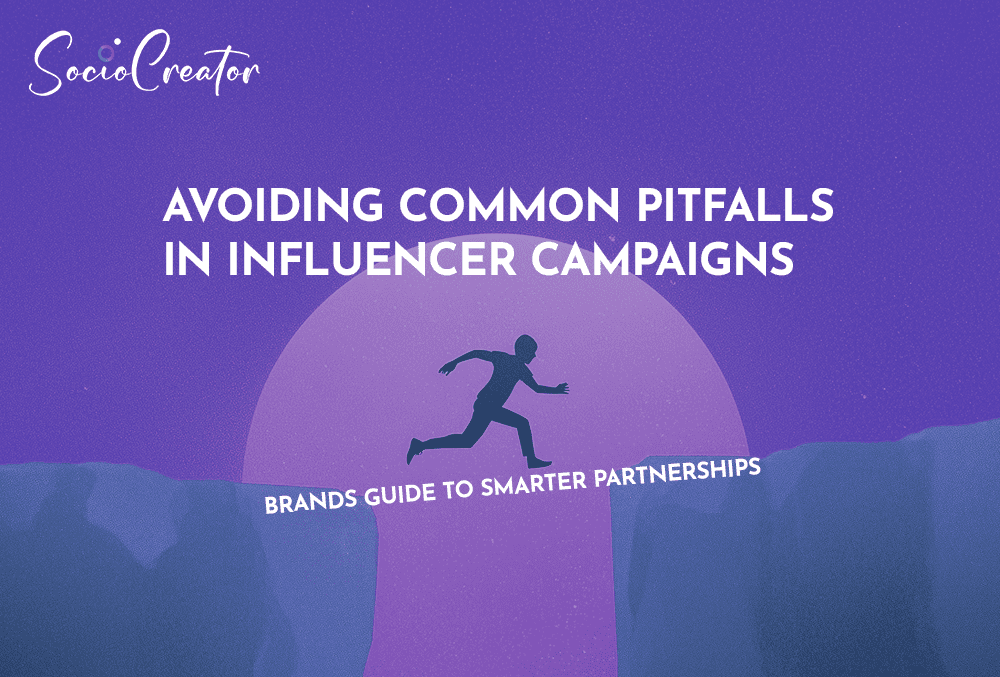Influencer campaigns hold immense potential — from skyrocketing reach to building trust with niche audiences. But when not executed thoughtfully, even the best-intentioned campaign can fall flat or worse, backfire.
“Influencer marketing can build empires or break reputations — and often, it all depends on avoiding a few common mistakes.”
Let’s explore the most common pitfalls brands make in influencer marketing, how to avoid them, and how you can build campaigns that drive real ROI.
1. Choosing the Wrong Influencer
The Mistake:
Brands often chase vanity metrics like high follower counts instead of true audience relevance.
Real-life example:
In 2019, fashion brand Revolve partnered with mega influencers for a body-positive campaign — but many of the creators had photoshopped bodies and a very narrow beauty standard. The campaign received backlash for inauthenticity.
What to Do Instead:
- Focus on audience alignment not just reach.
- Use tools or agencies to assess follower authenticity.
- Look for engagement rate, content quality, tone of voice, and values.
3. One-Off Collaborations Without Nurturing
The Mistake:
Brands run “hit-and-run” campaigns with creators, treating them like media buys, not partners.
Why that’s bad:
Audiences can spot a one-time promo vs a long-term relationship. It feels transactional and insincere.
Smarter Move:
- Build creator relationships — not transactions.
- Engage them beyond a campaign: comments, gifts, surprise bonuses.
- Long-term collabs = deeper trust & brand recall.
4. Not Tracking the Right Metrics
Tracking the Right Metrics
The Mistake:
Focusing only on likes and views, without measuring deeper performance like conversions or saves.
Reality check:
Not all posts will go viral, but well-executed influencer campaigns can lead to long-tail conversions.
What to Track:
- Engagement rate (likes, comments, shares, saves)
- Swipe-ups or link clicks
- Website traffic from influencer links
- Sales via affiliate/referral codes
- Brand sentiment and mentions
5. Over-Scripting the Creators
The Mistake:
Brands sometimes try to control the creator’s voice too much, resulting in scripted or unnatural content.
Real example:
A skincare brand required creators to read an exact script. The posts felt like ads — and followers tuned out. Engagement dropped by 70%.
Let Creators Be Creators:
- Share brand talking points, not a script.
- Allow storytelling in the creator’s own voice.
- Remember: authenticity > perfection.
6. Ignoring Legal and Disclosure Norms
The Mistake:
Missing FTC or ASCI guidelines around #Ad disclosures.
What it costs:
Non-compliance can lead to audience mistrust, penalties, and platform takedowns.
Play It Smart:
- Ensure influencers use #ad or #sponsored where required.
- Provide simple disclosure best practices to your creators.
7. Not Repurposing Influencer Content
The Mistake:
Treating influencer content as a one-time event rather than a long-term asset.
What You Should Do:
- Reuse top-performing creator content in paid ads (whitelisted or boosted).
- Add them to your product pages.
- Use them in email marketing or retargeting campaigns.
- Always get usage rights upfront!
Final Thoughts: It’s About Partnership, Not Perfection
Partnership
Influencer marketing isn’t just a media channel — it’s a relationship channel.
You don’t have to get everything right the first time. But learning from these common mistakes can help you build smarter, more effective campaigns that resonate with the right audience, create lasting impact, and deliver ROI.
FAQs
🔹 What’s the biggest mistake brands make in influencer campaigns?
Not aligning creators with brand values and audience. Influencer-brand mismatch is one of the top reasons campaigns fail.
🔹 How do I know if an influencer has fake followers?
Use platforms like HypeAuditor, Modash, or manual checks like sudden spikes in followers or low engagement vs high reach.
🔹 Is it okay to give creators full creative freedom?
Yes — but with a clear brief and brand boundaries. The best content comes from trust + creative freedom.
🔹 How can I measure ROI in influencer marketing?
Set clear KPIs: engagement, reach, conversions, affiliate sales, traffic, and sentiment. Track using UTM links or creator dashboards.

